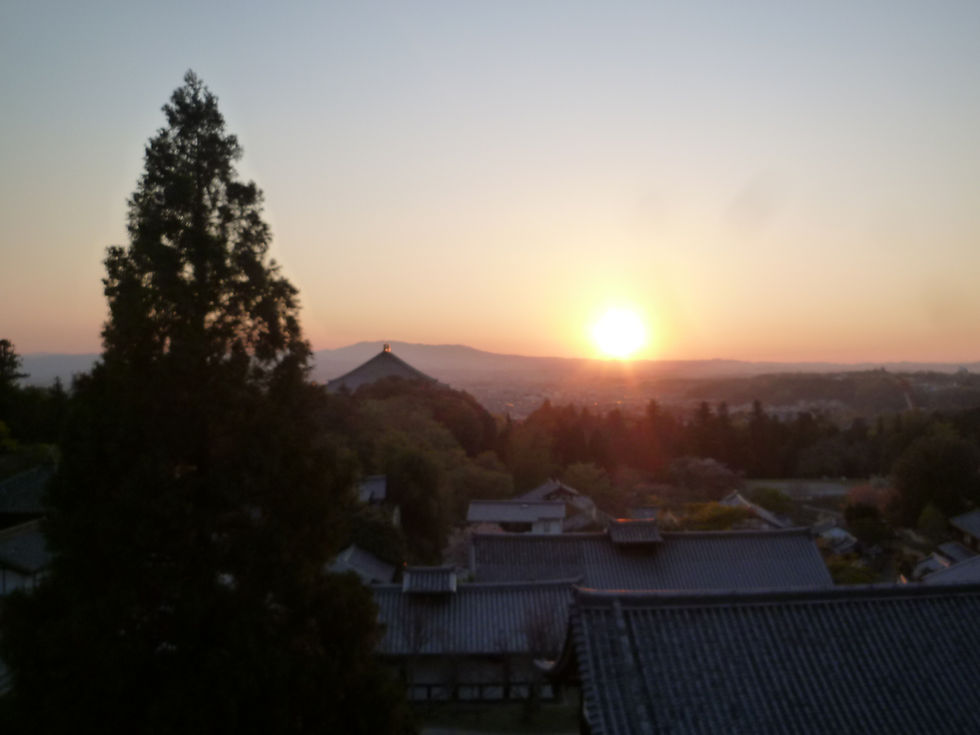
(picture from Wikipedia "shun-e (修二会)")
Nigatsudo Hall(二月堂) or the Second Month Temple stands on the hillside of the Todaiji Temple's Great Buddha Hall. It is known as a Kannon temple. ⭐️Kannon (or Kuan Yin(観音) is the most popular Bodhisattva in China and Japan. It is believed to be the Goddess of mercy, or Bodhisattva of Compassion who made a vow to save all mankind.
Overlooking the Nara basin, sunset view from here is absolutely stunning!
I also love the special atmosphere when the small metal lanterns and the large paper lanterns are lit after sunset. This hall is open for public 24 hours, but you cannot see the enshrined Eleven faced Kannon, as it is a hidden statue.


This hall is most famous for the Shuni-e (修二会)ceremony, also known as the Torch Fire Ceremony (Otaimatsu) or the Water Drawing Ceremony (Omizutori) , takes place from March 1st through the 14th every year.
Eleven selected monks of Todaiji-temple carry out the main ceremony for 2 weeks on behalf of all the people. The aim is, purification, cleansing of previous sins and prayer for peace, welfare and good health. They have to follow series of preparations to be ready to officiate the long, strict, physically demanding traditional rituals.
The Torch Fire Ceremony is spectacular and impressive as in the first picture and the following Youtube video. However, it is not the main event. It is held from 7pm every evening, when the monks go up to the temple for the night ritual. The torches are carried by special men trained for this.
Amazing fact is, the ceremony has been held without interruption since the year 752, which is more than 1,250 years. Actually, this year 2018 was the 1268th ceremony. This cannot be achieved without a lot of hidden physical, financial supports by the local people.
There are many Shinto Matsuri, or festivals with long history held by the many locals by themselves to the local Shinto deities throughout Japan. They are more open, and the aim is basically the same; to send gratitude or pray for good harvest, health and welfare for the coming year. But, non of them last for as long as two weeks, and non of them do for the purpose of repentance representing all the people. (To be strict, Todaiji Temple and the 11 monks start preparation in the middle of February.. )
Today, people tend to go to temples or shrines to pray for their personal wishes to be granted and good luck. But maybe they are missing virtues... humbleness, self less mind. Shuni-e is a Todaiji-Temple's Buddhist ceremony, but interestingly, in one part, a monk reads a long list of names of Shinto deities to welcome them to join this ceremony.
I believe Nara's unique peaceful, serine atmosphere is thanks to this annual ceremony at Nigatsu do Hall. Somehow, I feel safe and protected from any natural disasters, such as earthquakes, typhoons, too.
In Nara, spring is said to come after the Shuni-e Ceremony is over on the late at night of March 14th.

